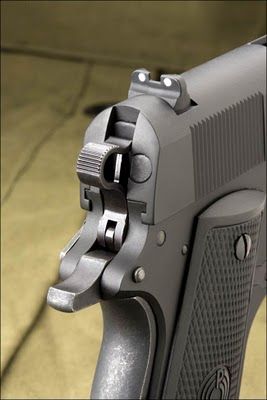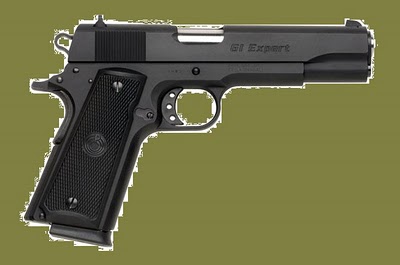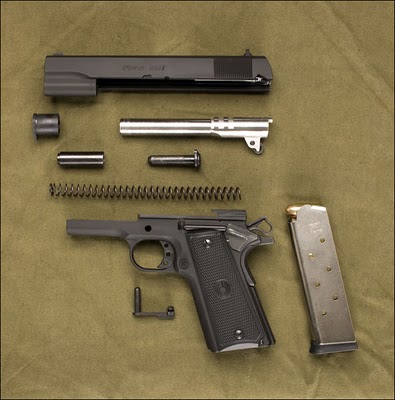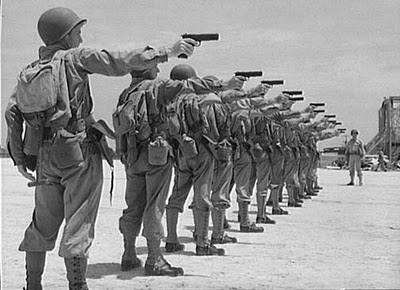Why Everyone Should Own an M1911
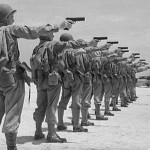
The following is the start of a series of posts to commemorate the upcoming centennial of the grandaddy of the modern semi-automatic pistol - the venerable M1911 - I carry one and so should every law-abiding citizen - it is THE definitive sidearm of the American fighting man . . .
The latest incarnation of John Moses Browning's gift to Western civilization is from Para USA, based out of Pineville NC, near Charlotte and about an hour away from my house.
GI Expert Specifications:
Model Name: GI Expert™
Caliber: .45 ACP
Barrel: 5 inches, stainless steel
Twist: 1 in 16 inches, left-hand
Action: Single-action, Semi-automatic
Sights: Dovetail Fixed, 3-White Dot
Receiver: Carbon Steel
Trigger: Medium length
Hammer: Skeletonized Spur
Magazine: 8-round with removable base pad
Overall Length: 8.5 inches
Height: 5.75 inches
Weight: 39 ounces
Finish: Covert Black Para Kote™
Stocks: Checkered Polymer
Safeties: Slide Lock, Internal Firing Block, Grip
Additional Features: Lowered and flared ejection port, beveled magazine well, flat mainspring housing, grip safety contoured for spur hammer
Product Code: GI45
Read this excellent review by Harwood Loomis, editor of M1911.org .
Question and Answer on the M1911:
Question from RTLM: It's billed as an "entry level" 1911. What would be an example of a non-entry level 1911?
Answer from SEAN LINNANE: When you buy your basic M1911 brand new what you get right out of the box is essentially a platform to "build up" on. Over the last half of the twentieth century professional soldiers, lawmen, gunsmiths, metallurgists, competition shooters and others combined their shared experience and energies to make the M1911 lighter, more accurate with better sights and match grade trigger, ambidextrous thumb safeties, beavertail grip safety and beveled magazine well; they sought to make it able to handle modern hollowpoint ammunition reliably via polished feed ramp and flared ejection port.
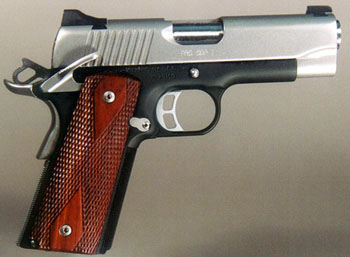 In the Pro CDP II, Kimber brought back the longer trigger and flat mainspring housing of the M1911.
In the Pro CDP II, Kimber brought back the longer trigger and flat mainspring housing of the M1911.
The Para GI Expert I has a suggested retail price of $599 - if you shop around you can get your hands on an M1911 for less than $500. A tricked out 1911 with all the bells and whistles can take you into the $1500 real fast; so for many the plan is to get yourself into the game with a starter kit and work up from there.
Question from Toaster 802: I had a Colt once. I had always wanted a 1911, but when my uncle saw it he laughed at me. He said don't bother reloading, just throw it at your enemy. "Your last round might just hit something."
Then when I shot it I knew why he was busting my stones. It was all over the place. Box after box. after a while I switched to a 220. Better fit for me and mine.
Answer from SEAN LINNANE: The first 1911 I carried in the Army was made by the Singer Sewing Machine Company; it was World War II-era issue and it rattled like a tool box full of wrenches. I could barely hit the broadside of a barn with it - from the inside - but my platoon sergeant was okay with that because he told me I was only expected to engage targets within 1 meter with it - anything beyond that distance I was supposed to engage with the M60.
Since that time long ago, I learned a thing or two about the mechanical side of firearms; how to slap in new parts and tighten up an old gun, and how to "stroke" a new gun to make it operate smooth and feed reliably.
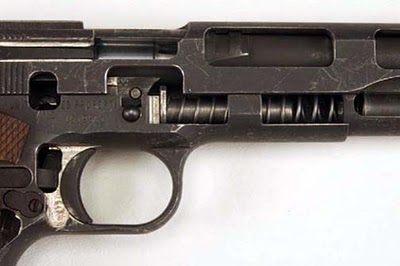 M1911A1 .45 cal. automatic pistol, cut away to show internal parts.
M1911A1 .45 cal. automatic pistol, cut away to show internal parts.
Bear in mind that the U.S. Army's premier combat unit - 1st SFOD-D - a.k.a. "Delta Force" - carries M1911s.
Many military and law enforcement organizations in the United States continue to use (often modified) M1911A1 pistols because they favor the stopping power of the .45 cartridge and the superior handling of the weapon in close fighting. Marine Force Recon, Los Angeles Police Department Special Weapons and Tactics, the FBI Hostage Rescue Team are among them.
The Marine Expeditionary Unit (Special Operations Capable) pistol is an enhanced combat .45 caliber, semi-automatic pistol, built on the M1911A1 frame but incorporating special features and components selected to meet MEU requirements.
Marine Expeditionary Units formerly issued M1911s to Force Recon units. Hand-selected Colt M1911A1 frames were gutted, deburred, and prepared for additional use by the USMC Precision Weapon Section (PWS) at Marine Corps Base Quantico. They were then assembled with after-market grip safeties, ambidextrous thumb safeties, triggers, improved high-visibility sights, accurized barrels, grips, and improved Wilson magazines. These hand-made pistols were tuned to specifications and preferences of end users.
In the late 1980s, the Marines laid out a series of specifications and improvements to make Browning's design ready for 21st century combat, many of which have been included in MEU(SOC) pistol designs, but design and supply time was limited.
In response to this demand, Kimber shortly began producing a limited number of what evolved into the Interim Close Quarters Battle pistol (ICQB). Maintaining the simple recoil assembly, 5-inch barrel (though using a stainless steel match grade barrel), and internal extractor, the ICQB is not much different from Browning's original design.
The final units as issued to MCSOCOM Det-1 are the Kimber ICQBs with Surefire IMPL (Integrated Military Pistol Light), Dawson Precision Rails, Tritium Novak LoMount sights, Gemtech TRL Tactical Retention Lanyards, modified Safariland 6004 holsters, and Wilson Combat '47D' 8 round magazines. They have reportedly been used with over 15,000 rounds apiece.
I can assure you that a trained pistol marksman is capable of putting all rounds into a four-inch circle at ten-to-fifteen meters with a .45 - and I'll shoot for beer with anybody; my .45 against whatever you got.
It's amazing what can be done to what is basically a machine; I've even seen a fully automatic version of the M1911 in the Philippines. The thing fed off modified M3 "Grease Gun" magazines - talk about spray and pray!
Originally posted at STORMBRINGER.
